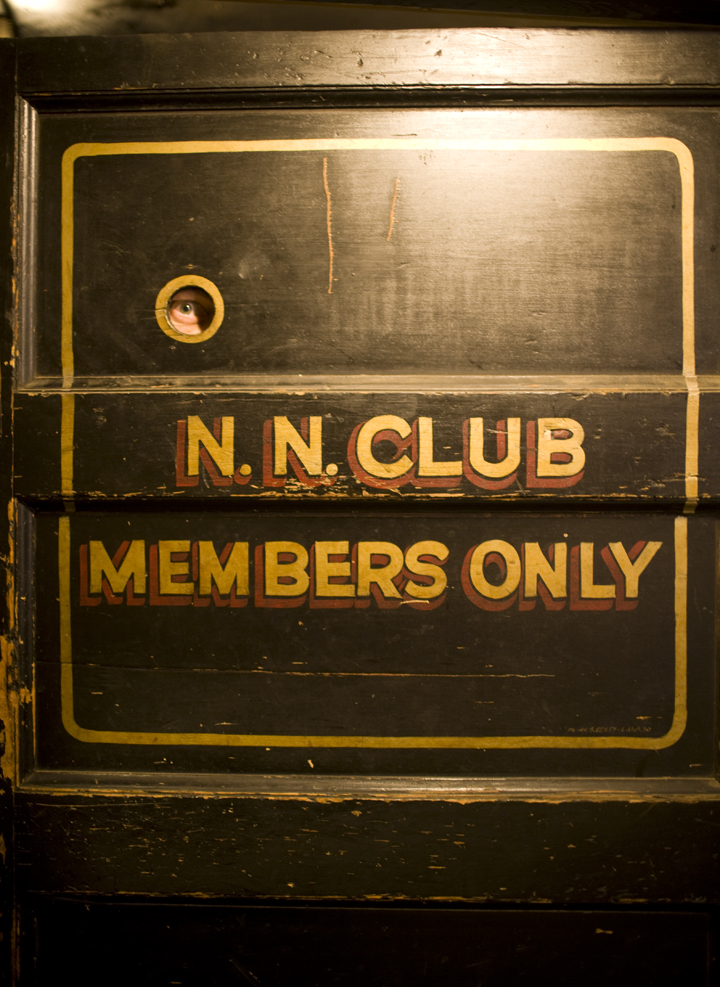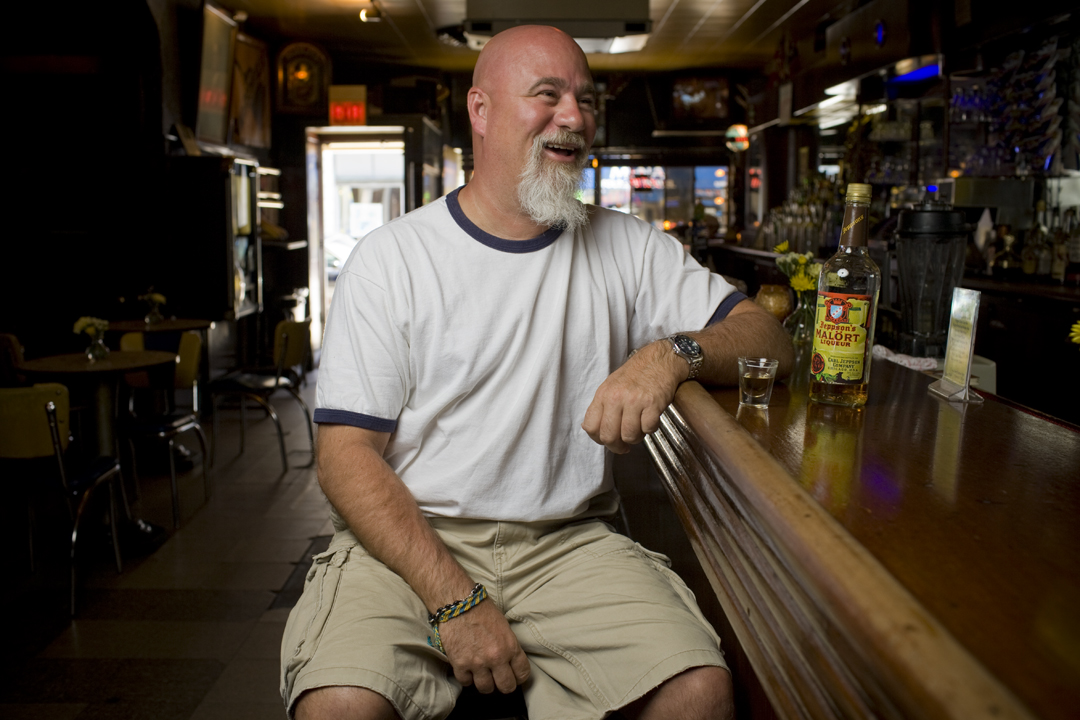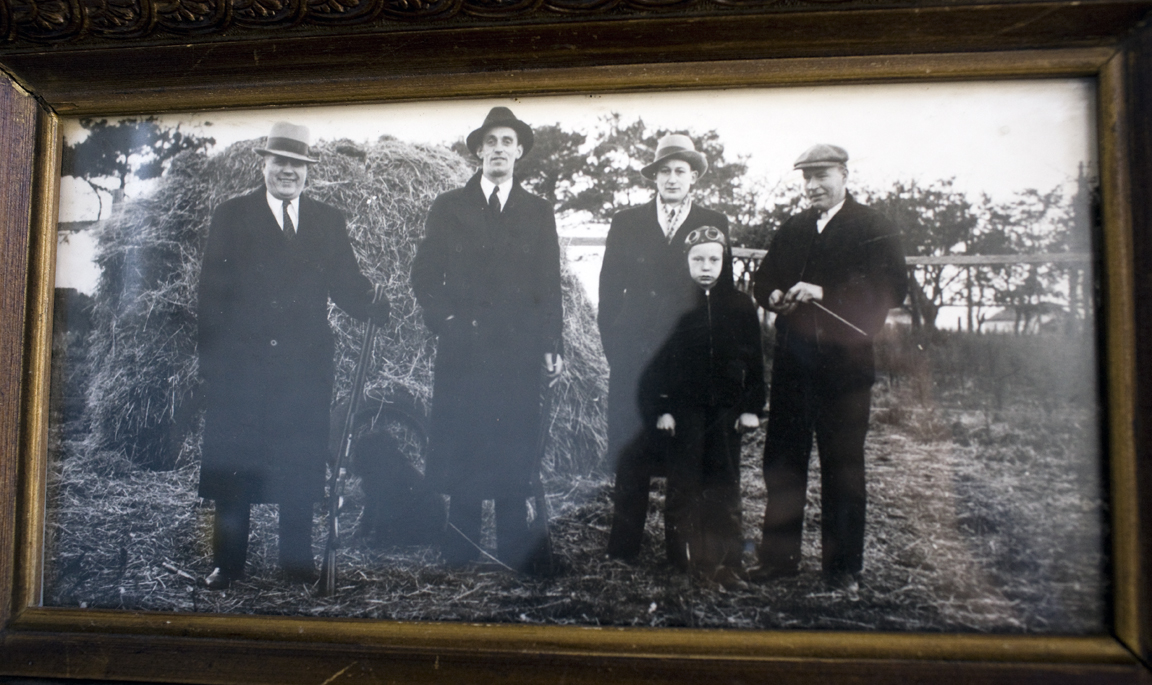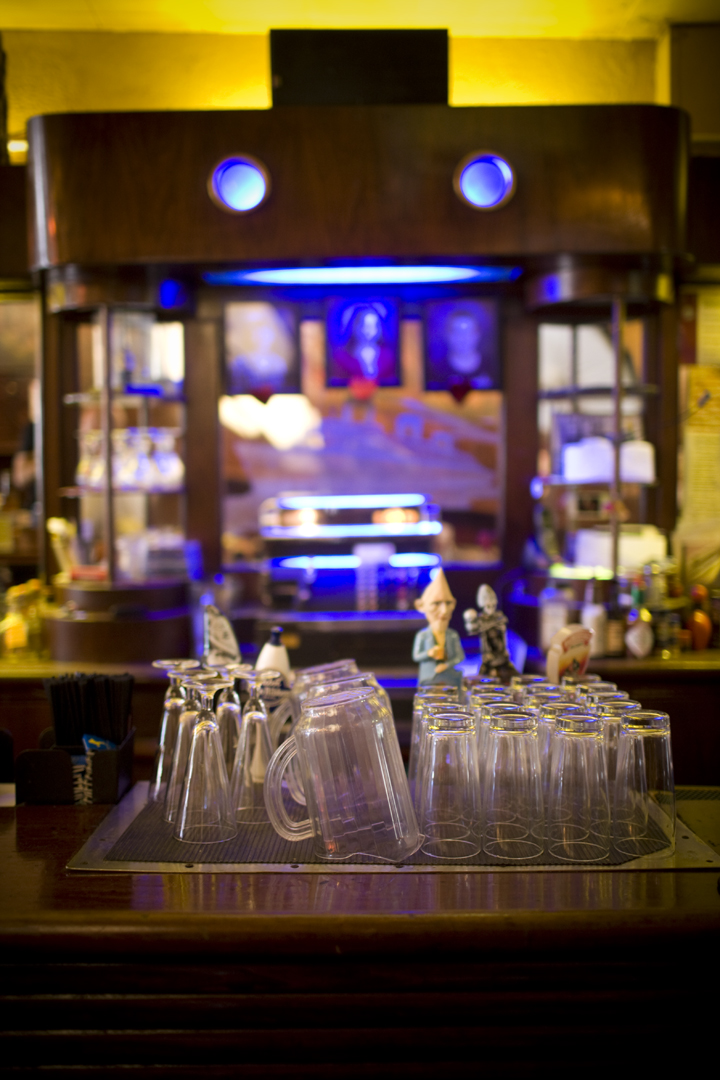All it takes is five cents
if you're lucky, to get a sense of Simon's Tavern, a landmark neighborhood bar nestled in Andersonville, the heart of what was once Swedish Chicago.
-
 The speakeasy door, complete with a steel peephole and a cryptic “N.N. Club” scratched into the wood... planned location for the first power nodes to be installed in Chicago's Andersonville.
The speakeasy door, complete with a steel peephole and a cryptic “N.N. Club” scratched into the wood... planned location for the first power nodes to be installed in Chicago's Andersonville. -
-
For one shiny nickel Scott Martin takes visitors on a tour of the past, one which some long-time neighborhood residents don't even know about. Martin is the owner of Simon’s Tavern, a landmark neighborhood bar nestled in Andersonville, the heart of what was once Swedish Chicago.
-
 Simon did purchase his whiskey from Capone.
Simon did purchase his whiskey from Capone. -
-
“This is one of the last real neighborhood bars left in the city,” Martin said. “The trend in the industry is toward an Applebee’s or some other chain place. I don’t know why people think it’s more attractive than going to a good, smoky neighborhood bar. I’m lucky. Simon’s is a busy place because of what it is – because it isn’t Applebee or Bennigans - and because the neighborhood is what it is. I feel like I could almost be a dinosaur. I will fight to say, ‘absolutely this is the right kind of place,’ the kind of place where you can sit down and drink a beer and have a conversation with somebody.”
Simon’s has stood at the same place, 5210 North Clark St. in Chicago, for nearly 75 years. When original owner Simon Lundberg first opened his tavern, it was a mecca for the many Swedish immigrants then living and working in Chicago. Most congregated in the Andersonville section of the Windy City. While time has changed the neighborhood from a nearly exclusive Swedish enclave to a typical American melting pot, Simon’s remains a reminder of the neighborhood’s roots. -
 Simon Lundberg, left in this photograph, whose establishment was never frequented by the infamous Al Capone did purchase its whiskey from Capone.
Simon Lundberg, left in this photograph, whose establishment was never frequented by the infamous Al Capone did purchase its whiskey from Capone. -
“I grew up in this neighborhood,” Martin said. “My mom was secretary at Ebenezer Lutheran Church and my father was a member of a Swedish singing club. I can remember as a little kid I decided to be a dog and walked on all fours down Clark Street. I’ve been in this neighborhood all my life.”
His grandparents on his mother’s side emigrated from Gothenburg and when they arrived in Chicago, Simon’s Tavern was already a landmark. Martin remembers the day he realized the tavern was more than just a watering hole.
“If my grandparents got into a tiff, there was a bar called Gangler’s where my grandfather would stop,” Martin said. “If he was fighting with Grandma, he would walk to Simon’s because she wouldn’t walk that far and the three girls - including my mother - would have to go find grandpa.” -
 When Lundberg decorated the place in 1933 when it officially opened as a tavern, he borrowed a page from the grandeur of transatlantic ocean liners. He decorated the tavern similarly to the recently launched luxury passenger ship Kungsholm, run by the Swedish American Line.
When Lundberg decorated the place in 1933 when it officially opened as a tavern, he borrowed a page from the grandeur of transatlantic ocean liners. He decorated the tavern similarly to the recently launched luxury passenger ship Kungsholm, run by the Swedish American Line. -
Tavern with a history
When Martin finally convinced Roy Lundberg, son of the original owner to sell Simon’s, he already had a good handle on the history of the place. Simon Lundberg had opened his tavern as a place for Swedes to come and be together. He installed a bullet-proof check cashing booth and would cash workers’ paychecks “before their wives could get their hands on them.”
“Now that I am a little bit older, I realize how many times my mom sent me here to get my dad out of the bar,” Martin sad. “It was pay day.”
Lundberg also acted as something of a job placement agency for Swedes, Martin said.
“Simon knew the guys who could provide jobs came into Simon’s Tavern,” he said. “So any time there was a Swede looking for job, he would go talk to Simon, and literally the guy would tell you to hang out at the bar for a week, drink and act responsibly, and he would get a job and know where he could get his check cashed at the end of the week.”
There is a also a hidden history at Simon’s Tavern, one Martin heard in whispers and rumors but didn’t really know about until he finally bought the bar in November of 1994. For years, the legend was Simon’s was a Prohibition Era speakeasy that legendary Chicago gangster Al Capone frequented. Martin said at least part of the story was true.
“Al Capone never came here,” he said, “but Simon did purchase his whiskey from Capone. That much is true. And, there was a speakeasy here.”
Simon’s Tavern got its start as the Berwin Food Shop, a lunch stand that also sold coffee and breakfast to local workers. Martin said one day “a couple of guys came in and asked for some coffee. A guy pulled out a flask of whiskey and poured some into the coffee. Simon thought it was pretty good coffee, so he started selling it.”
By 1926, Lundberg had enough money to purchase the entire building. Prohibition was still in effect, but in the Chicago of the Roaring 20's, anything was possible. So, the Swede built a speakeasy - a secret night club - in the basement of his building.
“The door is still there. Now it’s my office and storage room,” Martin said. “The walls are plastered over now, but I can see where there were five or so tables with whiskey boxes all along one wall. Roy (Lundberg) was just a little boy then but he said he can remember men were smoking cigars and drinking whiskey and talking about business, drinking, women, and politics, but then he would come down hours later and they were only speaking of drinking and women.”
Martin still has the speakeasy door, complete with a steel peephole and a cryptic “N.N. Club” scratched into the wood. Neighborhood rumor is the “N.N.” meant “No Norwegians.” Martin said the truth was a bit simpler: “It stands for ‘No Name’ Club.” When Simon Lundberg retired, his son Roy took over before he sold the place to Martin slightly less than 14 years ago. Since then, Martin has made few, if any, changes to the bar. When Lundberg decorated the place in 1933 when it officially opened as a tavern, he borrowed a page from the grandeur of transatlantic ocean liners. He decorated the tavern similarly to the luxury passenger ships sailing the Atlantic, complete with portholes for windows. The newest Swedish American Line ship, Kungsholm, had been launched in 1928, luxuriously designed with off-season cruising in mind. (One story of an immigrant to arrive on the first Kungsholm in 1923: 'When I emigrated to America'
“He wanted his customers to know how it would feel to sail on an ocean liner, since most of them would never get the chance,” Martin said.
Although the history and décor provide a big draw, the owner may arguably be the biggest draw at Simon’s Tavern. -
Keeping a strong Swedish flair
Martin is completely dedicated to maintaining Simon’s as it always was, a neighborhood bar with a strong Swedish flair. He serves glögg, the sweet, intoxicating traditional Swedish beverage, complete with almonds and raisins every Christmas. He makes sure the Swedish-ness of the place remains as well.
“I think about the part (Swedes) played in the city, just like all the other ethnic groups,” he said. “Sometimes I get sad because the neighborhood isn’t like that anymore, but the neighborhood is still great and I’m proud to represent what it used to be. Get me in there on any given night and I’ll give people a tour and they’ll know it’s a Swedish neighborhood.”
They might even learn the history of one of the more unusual bar decorations in the Windy City. Back in 1950, a regular patron painted a huge mural of the place, based on a photo someone took on a busy night. It's the story behind the mural, though, that brings people in: One patron had his face scratched out, then replaced. The legend is that one patron of the bar is painted in profile, and he was very unhappy about that—everyone else is looking straight ahead. “As soon as the mural went up he wanted to know why he was profiled. He complained every year until the artist had enough complaining, cut the guy out, and painted on new a face,” explained Martin.
Although it’s not the real story – Martin said he couldn’t reveal the true story – the mural remains a point of speculation and legend with anyone going to Simon’s Tavern. Nobody, other than Martin and a handful of confidants, really knows the truth.
“If I hear someone telling other people about the mural, I like to just listen and see what he knows,” Martin said. “I had one guy saying that word of mouth was that guy on the mural is Al Capone. It just goes like that.”
And the price for that trip down memory lane, complete with luxury liners, gangsters, speakeasies, and Chicago history?
“If someone has a shiny nickel, I take them on a tour that lasts 45 minutes,” he said.
It’s what makes Simon’s Tavern a still-beating heart of Swedish Chicago. -
More information on Simon's Tavern
-
-
